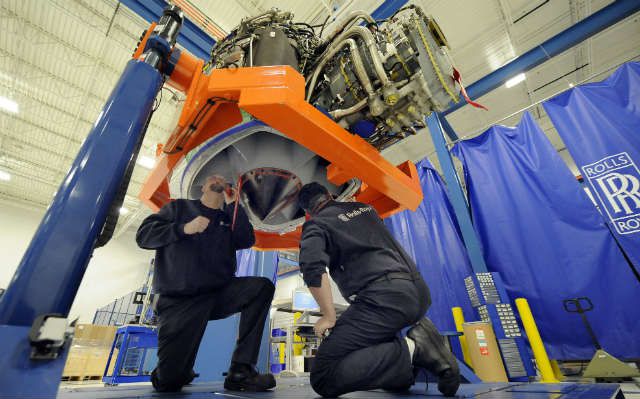Mar 11, 2015 ASDNews Source : Ministry of Defence (United Kingdom)
The Uk's Submarine Industry Will Benefit from GBP285 M of Investment to Continue Design Work for the Royal Navy's Next Generation of Nuclear Deterrent Submarines.
The release of funding for the design work is within the existing Successor programme’s £3.3 billion Assessment Phase. The funding forms part of the MoD’s commitment to spending £163 billion on equipment and equipment support over the next 10 years to keep Britain safe. That includes new strike fighters; more surveillance aircraft; hunter killer submarines; two aircraft carriers; and the most advanced armoured vehicles.
The Successor programme currently employs around 2,200 people in the UK, working for BAE Systems, Babcock and Rolls-Royce. For BAE Systems alone, the funding will sustain over 1,400 jobs on a programme that has already engaged with more than 240 suppliers.
The work is largely based at the home of the UK’s submarine manufacturing industry in Barrow-in-Furness, Cumbria but also across the UK including sites in Raynesway in Derby and Bristol.
Defence Secretary Michael Fallon said:
''The UK has been committed to a continuous at-sea deterrent for more than 45 years. This is because it is the responsibility of the British Government to protect its citizens and provide this vital line of defence. It is therefore crucial that we continue to invest in the Successor programme to be ready for a final decision on renewal next year.''
''It is thanks to our long-term economic plan that we are able to invest in this latest wave of design funding, which will help to secure the jobs of hundreds of people working across the MOD’s three main industrial partners working on the Successor programme. This underlines how important this work is to the British economy as well as the future security of the UK.''
As a result of today’s announcement, BAE Systems will proceed with an additional £257 million worth of design work, with a further £22 million at Babcock and £6 million at Rolls-Royce.
The Successor submarine is designed to be one of the most stealthy submarines in the world. It will also be the largest, safest and most technically advanced submarine ever built in the UK.
Under current plans, four Vanguard submarines – which currently maintain the UK’s nuclear deterrent - will be replaced from 2028.
Tony Johns, the Managing Director at BAE Systems’ Submarines, said:
''Designing a new, nuclear-powered ballistic missile submarine is one of the most challenging engineering projects in the world today. The Successor programme is the largest and most complex project we have ever faced. This funding will now allow us to mature the design over the next 12 months to enable us to start construction in 2016.''
Chief of Materiel (Fleet) Vice Admiral Simon Lister said:
''Today’s announcement on the third phase of design funding is another step forward in the programme to deliver the Successor submarine.''
''Over the next year, work on the design of the submarine will draw on cutting edge capabilities in innovation, design and engineering available in the UK to ensure we are able to meet the future defence needs of the UK.''
All Royal Navy submarines will be based at Faslane by 2020, including the Astute and Trafalgar class attack submarines.
commenter cet article …

























